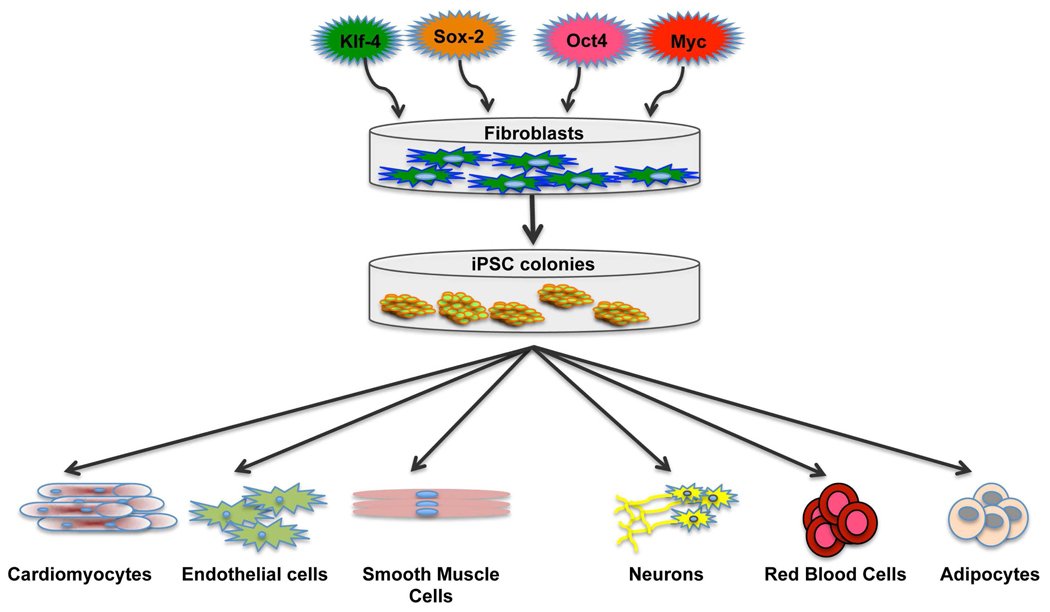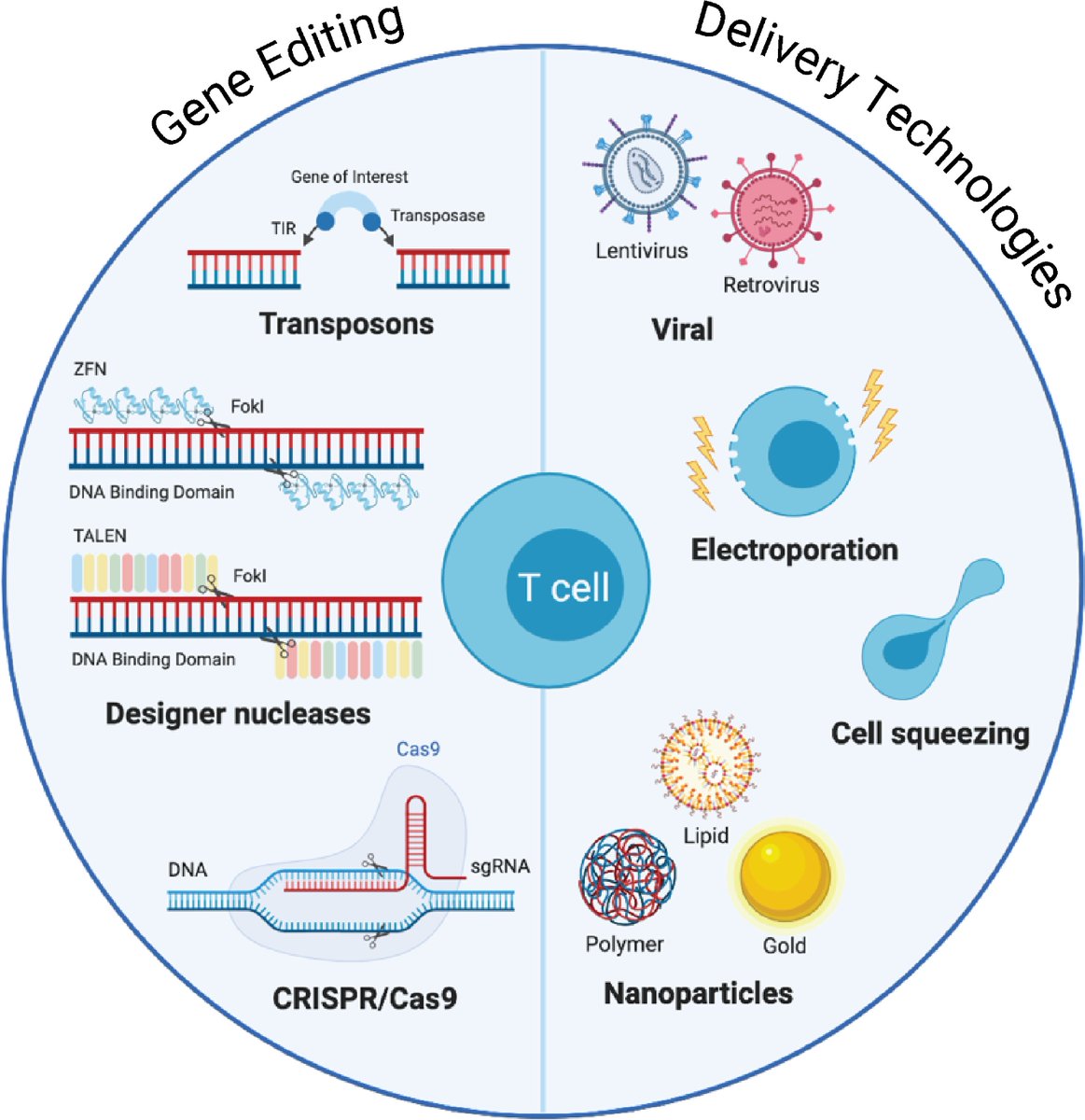
1/ This has been a huge love of mine for years. The engineering of cells to create cancer therapies. The induced Pluripotent Stem Cells (iPSC) can revolutionize the way we create CAR-T or CAR-NK cells for cancer treatments.
2/ The process of the iPSC can be automated, duplicated and consistent as a source of low cost cell therapies. So how does this work?
3/ They start by taking any cell. They mix it with a combination of transcription factors like Klf4, Sox2, Oct4 and Myc. This will take those cells back into a stem cell. 

4/ Its believed this is done by unpackaging the DNA which has been turned off as the cells specialize during development. The colonies of these iPSC cells can then be developed into new cell lines using a combination of cytokines and DNA editing.
5/ The DNA of the cell is its programming. Just like with any computer, if you reprogram the DNA with editing, you change the cells behavior. Studies have shown that transplanting 1 cells DNA into another cell with cause the new cell to assume the behavior of the original cell.
6/ This showed us that DNA is the master programming for any cell. If we change that program with gene editing, we can create any cell with any behavior we wish. 

7/ In my threads on T cells, I explained how a T cell could develop millions of random receptors by randomly selecting from a set of genes called Variable, Diversity, and Junctional. This creates the random T cell receptor. 

8/ But what if we took out all those genes for the TCR using CRISPR editing and replaced them with just one CAR receptor? We could use cytokines to develop those stem cells down that pathway of T cell lineage. 

9/ Once you have a stem cell with all the edits you desire to the DNA, you can create a master bank of those stem cells. This creates a renewable resource of cells that can be used to develop cell therapies. 

10/ There are a lot of benefits for using iPSC manufacturing for cell therapies. The first is their consistency to create high quality cells at a low cost.
11/ The second is expansion of the T cells. Each T cell can replicate about 50 times before they run into the Hayflick limit. Since you have to have room in the body for them to expand to respond, you can only expand them so far in the lab. 

12/ Taking the T cells from a donor and editing them after they are fully grown T cells will end up with about 60% to 70% having all the desired edits when you do multiple edits like insertion of a CAR into the T cell locus, PD-1 knockout, HLA-E insertion into the MHC I locus.
13/ With iPSC every cell is an identical copy of the DNA that is editing during the stem cell phase. They might end up with 1 in every 1,000 stem cell that has every edit they want, but they can collect those specific stem cells and build a master bank.
14/ That master bank can go on and make 15,000 doses per year at a cost of less than $2,000 per.
• • •
Missing some Tweet in this thread? You can try to
force a refresh







